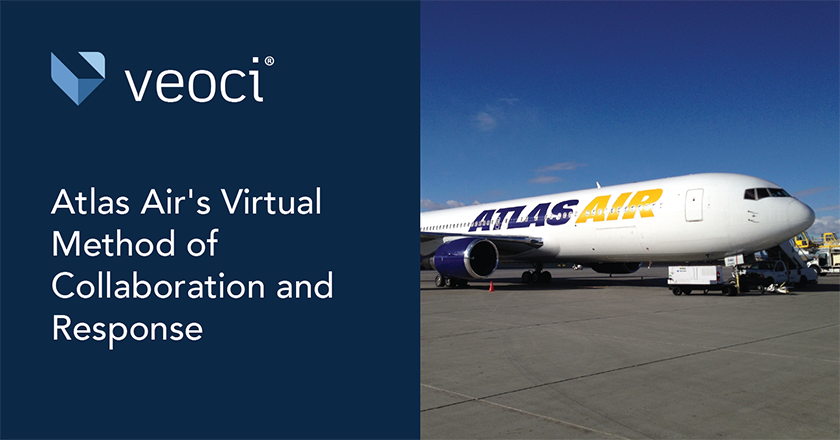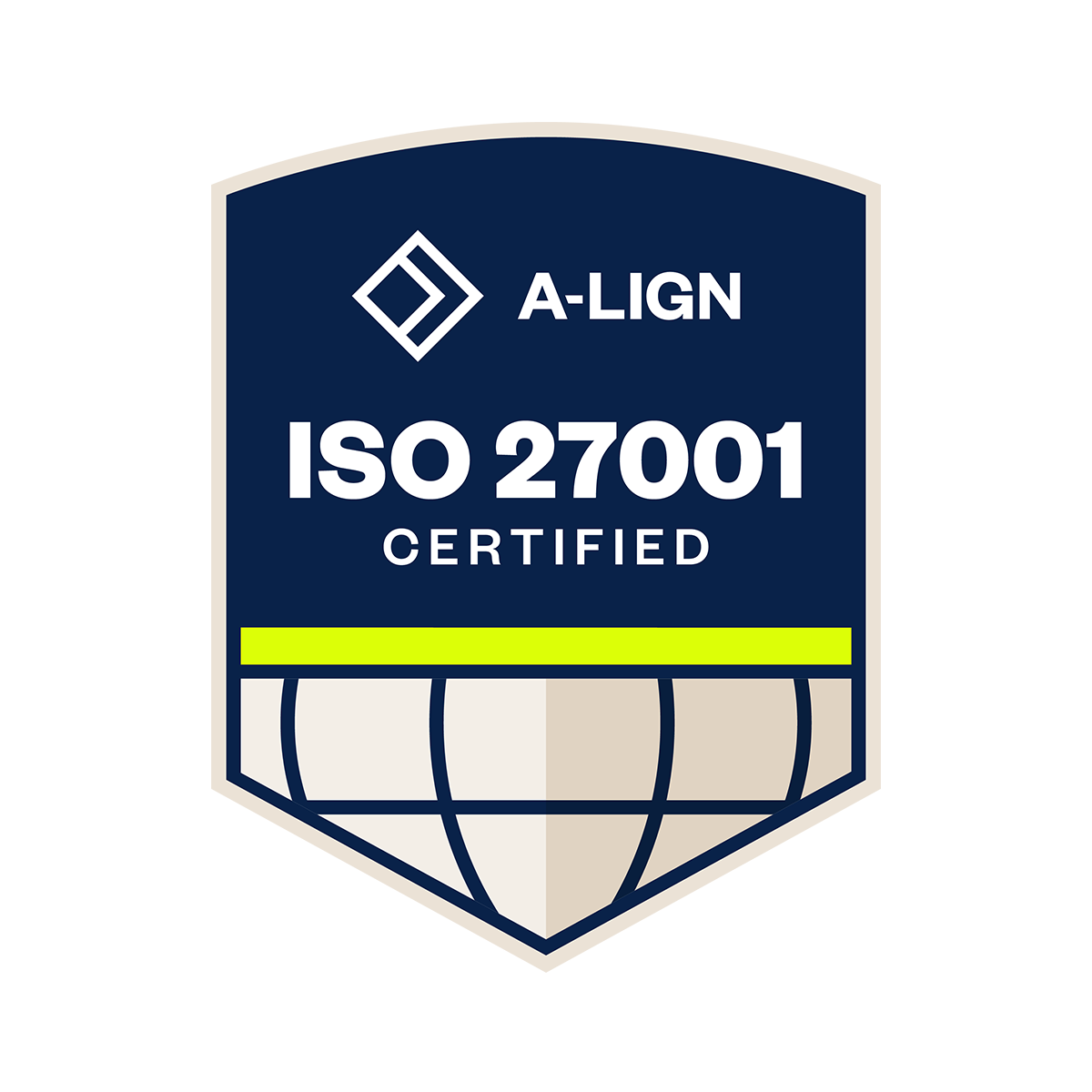Atlas Air Worldwide (AAWW) is a leading provider of outsourced aircraft and aviation operating services. With over 100 planes in their fleet, less than 30% of their operations occurring in the continental US, and a very dynamic business model, Atlas Air needed an industry-leading collaboration, communication, and response tool.
Eric Rynerson, Lead Safety Investigator at Atlas Air, took on the task of transforming and digitizing the organization’s Emergency Response Center (ERC). Like many organizations of its kind, its growth increased the complexity of coordinating an efficient response to emergencies. Luckily, Veoci seemed to be able to help.
This blog post is a summary of a previously held webinar, which occurred on June 30th, 2021. If you’d like to see the recording, you can access it here.
Asking and Answering “How?”
It was time to move on from boardrooms and paper checklists; Eric knew that digitizing the ERC was a priority. Specifically, Eric focused on four areas:
- Facilitating initial call out notifications
- Digitizing access to Emergency Response Plan (ERP) checklists for each department
- Accessing information via mobile
- Improving event timeline tracking
First, Eric asked exactly how they were going to implement Veoci. The team decided on a building block approach: prioritizing the highly-used data and information that could be built upon.
Another important decision came when the team started constructing the checklists. It is nearly impossible to imagine every possible scenario end-users could encounter when in the field, so Eric made every checklist “open.” This kept processes from being task driven, allowed information to be collected as it came in during an event, and removed issues and operational hold-ups.
Eric’s last hurdle was deciding how and if to utilize the existing conference calling system. Fortunately, Veoci was able to integrate with this system which allowed for a smooth transition. Eric noted how great it was to have that flexibility within the platform.
Simplistic Checklists
With 14 paper binders to replace with digital processes, Eric got to work creating checklists. His philosophy going in, he said, was trial and error. He also noted that though Veoci was always there and ready to answer any questions he had, his stubbornness challenged him to complete the processes himself. With some training from Veoci Admin Boot Camp, he was ready to build those checklists.
Eric found that he needed to keep these procedures extremely simple for end-users, as most would not be using Veoci that often. Ideally, these only log-in during the four drills that occurred throughout the year.
Each of the 13 checklists Eric created generates alongside every activation. Checklist assignments are automatically made (according to the specifications set by AAWW) and users are notified accordingly. These notifications come in the form of emails, with a direct link to the assigned checklist. End-users can also receive push notifications on their company issued phones through the Veoci mobile app. The push notification also directs users to the checklist that has been assigned to them.
The notification capability within Veoci makes it simple for end-users to understand their expectations, and even helps improve response times during drills. AAWW also took advantage of the time delay feature, which allowed leadership to control the flow of information to end-users.
With the help of the Veoci team, Eric was also able to implement a custom solution that helps with monitoring each checklist progress. Each checklist, the collected information, and process status is displayed on a dashboard tile. With a quick glance of the dashboard, managers and other leaders within the company are able to get a general idea of operations and where every team is within their specific response processes.
From Boardrooms to Dashboards
With simplicity for end-users being the goal, Eric decided that the only view they should see when utilizing Veoci is a dashboard.
Each department within AAWW has an individual dashboard that is used as a “touchdown space,” where critical information can be displayed and collected from checklists. Checklists can also be accessed through these dashboards, providing end-users another means of accessing and completing tasks. Veoci’s security configurations also grant administrators the ability to limit accessibility to dashboards, lending an additional always-appreciated layer of information security.
Dashboards are essential for doling out resources and answers to commonly asked questions within the company or the department, eliminating the traditional need for an email thread.
Eric configured a dashboard specifically for tracking process progress. The safety department as well as members of the leadership team are able to use the dashboard as a common operating tool, as many are spread out all over the country. This common operating picture allows for clear communication and minimizes the opportunity for confusion.
The team also utilizes a drill dashboard during exercises. The dashboard contains flight information, links to quick guides for processes, maps, radar, and more, all to help end-users execute the drill efficiently and effectively.
Putting It All Together With a Plan
To link everything together, Eric created a plan within Veoci. When triggered through a Custom Action, the plan then completes all of the following actions over a span of two minutes.
An event-specific room is created, and members, managed by a list configured by AAWW, are assigned to the room. A new blank checklist is generated for each department and common files are added for increased usability as well.
The plan also configures a dashboard for each department and creates a Main ERC Dashboard for communication and collaboration. At the same time, the plan creates a checklist summary form and sends out task assignments with appropriate checklists for completion. A second notification confirms the activation for end-users.
Getting the Team on Board
With over 70 users across 13 departments, training end-users on how to use Veoci happened by department, completely remote, and in three phases.
Phase one covered the basics, including logging in, the user interface, notifications, checklists, and the mobile app. Eric mentioned that the uniform look and feel between the web and mobile platform made training much easier. The mobile app proved to be an especially useful asset for AAWW, as the organization is international with around-the-clock operations.
Phase two was a scenario-based exercise, designed to get end-users comfortable with Veoci. This phase included accessing checklists from emails and push notifications and toggling between checklists to dashboards.
Phase three was a full-scale drill and the final part of the training. The drill was a complete surprise to users, occurred remotely during the lunch hour, and lasted approximately an hour. Users began logging onto Veoci within 3 minutes of the initial trigger notification, the first checklist entry was submitted within 5 minutes, and 40% of the users that logged into the system did so via the mobile app.
The drill’s response time exceeded Eric and his team’s expectations, there were no technical issues, and the platform worked as designed. AAWW’s training and implementation was a success.
The Veoci Value Add
Eric explained that though AAWW began by configuring checklists and dashboards, they have since expanded how they utilize the Veoci platform.
Standard request reports were once a pain, but now Eric is able to quickly respond to a Federal Aviation Administration (FAA) request for information. With all of the needed data located within the platform, Eric can filter out the relative data, generate a professional-grade report, and track the communication all within Veoci.
In general, dashboards allow for transparency throughout organizations. This fact has been especially useful for Eric when it comes to communicating with fleet captains. Instead of sending over reports or updates manually, captains can now access a dashboard and view all of the real-time information they may need.
Investigation dashboards also benefit from the transparency, helping the company clearly see all relative information. By using Veoci to collect and store information, users can quickly obtain necessary data, and even have the capability to filter down to the specific data they need. AWW also sends out investigation notifications, alerting automated recipient lists in a structured format and also opening an investigation file.
The value add of Veoci for Eric is the natural expansion of use cases. Within this incredibly dynamic platform organizations can create essentially any solution to a problem they may be experiencing. The only demand from users is to use their imagination in terms of how Veoci can help.
Moving Forward
There were two final pieces of advice Eric imparted, the first being that the trial and error of developing your own use cases allows users to understand how to effectively manage Veoci. The second was that administrators should be thinking weekly about how to use Veoci, challenging themselves to find new and unique ways to utilize the platform.
With Eric and Veoci’s shared passion for continuous improvement, it is a partnership that ensures the operations of Atlas Air Worldwide will continue to be comprehensive, efficient, and safe.








